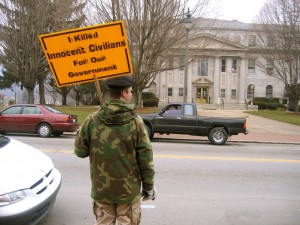U.S. Secretary of Education Arne Duncan wrote governors a letter last April explaining the purpose of $48.6 billion in federal stimulus money meant to stabilize public education during the recession.
Duncan said the federal money, part of a $100 billion investment in education by President Obama and Congress in the economic stimulus package, would go “directly to governors to help you balance your state budget.”
Governors could use the funds to help with the immediate budget crisis, he said, but must also commit to improve teacher quality, develop more rigorous standards, collect data to measure progress and turn around struggling schools.
Seven months later, as states issue the first reports on how the education stimulus money is being spent, Duncan and the U.S. Department of Education have criticized several states — including Hawaii — for using stimulus money to close budget gaps while reducing state spending on education.
The department’s inspector general identified three states — Connecticut, Massachusetts and Pennsylvania — that have used education stimulus money to “free up state resources for non-education budget items.” Hawaii was not mentioned by the department but has done the same thing as the other states, which may jeopardize Hawaii’s ability to qualify for $4.3 billion available nationally in federal Race to the Top grants.
Duncan has also said Hawaii is moving in the “wrong direction” by reducing classroom instruction time through teacher furloughs to help close the state’s projected $1 billion budget deficit through June 2011.
“We cannot allow current economic challenges to create a long-term educational crisis for the state,” he said in a letter Thursday to U.S. Rep. Neil Abercrombie, D-Hawaii. “We must all invest in our children’s education so that they, Hawaii, and our country can succeed in the global marketplace.”
Hawaii has been awarded millions of dollars in education stimulus money, and some parents have wondered why the funds are not being used to restore classroom instruction lost to teacher furloughs.
The answer is twofold.
First, the stimulus money has already been set aside to help Hawaii’s public schools. State lawmakers spread out $157 million in education stimulus money over the two-year budget to help offset cuts to public education. Without the money, Hawaii would have had to make even deeper cuts to education, possibly including mass layoffs of teachers.
Second, while millions more in federal stimulus money was given to Hawaii, the funds are restricted to specific education programs for low-income, special-education and disabled students and cannot be switched to help with the deficit or other purposes.
Gov. Linda Lingle has $35 million in stimulus money left at her discretion that some have suggested could be used to reduce the number of furlough days. But the governor may choose to invest the money in education improvements to help the state qualify for the larger prize of Race to the Top grants.
Worried that Hawaii will lose out on the competitive grants, state schools superintendent Pat Hamamoto and Garrett Toguchi, the chairman of the state Board of Education, have asked Duncan to judge Hawaii based on the potential to enhance teaching and student achievement, “not on the budgetary actions taken by the state’s Legislature and governor.”
A review of Hawaii’s application for the education stimulus money shows that Hawaii clearly indicated it would reduce state spending on education.
The U.S. Department of Education’s guidelines set the maintenance of effort requirement for stimulus money at fiscal year 2006 levels, meaning states could reduce state spending on education as long as they do not fall below the 2006 threshold.
The department’s inspector general acknowledged that state spending reductions on education are allowed under the guidelines, but warned that such flexibility could adversely impact the education reform goals of the stimulus package.
Linda Smith, Lingle’s senior policy adviser, said the state has used the education stimulus money properly and in keeping with the intent of Congress.
“They called it state fiscal stabilization funds because they recognized that states were facing financial challenges and needed to be able to use some of these (stimulus) monies to stabilize education,” she said. “And they set very specific ground rules for what was required to stabilize.”
Jobs protected
Teacher jobs were not only protected during budget cuts, but also in the new two-year contract between the state and the Hawaii State Teachers Association. Negotiators agreed to 17 furlough days a year for most teachers instead of pay cuts or layoffs.
The Obama administration announced on Friday that the economic stimulus package has saved or created about 325,000 education jobs nationwide, including at least 549 jobs in Hawaii, a figure local officials believe is low and does not reflect the full impact of the stimulus money.
The White House and the U.S. Department of Education also said in an October report that the stimulus money had helped states avoid teacher layoffs, which could have led to larger and often unacceptable class sizes. “Saving and generating jobs for teachers has had clear effects in the classroom,” the report found.
Mixed messages out of Washington, D.C., caused confusion locally as soon as the stimulus package was announced earlier this year.
Lingle wanted to use a significant portion of the education stimulus money to close the budget deficit in the last fiscal year that ended in June, which led to protests by Hamamoto and the state’s congressional delegation that the governor was missing the intent.
State House and Senate leaders instead chose to spread the stimulus money out over the two-year budget, essentially swapping it for state general-fund money to help offset budget cuts to the Department of Education.
The two-year budget includes $157 million in stimulus money meant to stabilize education — about $110 million for the Department of Education and $47 million for the University of Hawaii. The budget also contains $35 million more in government services stimulus money that lawmakers directed to the DOE and UH but is reserved at the governor’s discretion.
Lingle, the DOE and UH have agreed on how to use the $157 million, and while Hawaii has yet to actually draw all the money from the federal government, all of it is allocated in the budget.
Lingle has not said what she will do with all of the $35 million other than to pledge that it will be used for education, with 70 percent for the DOE and 30 percent for UH. Smith said Lingle would use $1.4 million for UH astronomy, science and engineering. The governor will likely use the remainder on education improvements that may help the state qualify for Race to the Top grants.
“Our best expenditure of these funds is to make sure that we can then put Hawaii in a position to get more federal money,” Smith said.
Abercrombie has told lawmakers that Lingle may be eligible for an additional $12 million in discretionary government services stimulus money, although Smith said on Friday that the administration was not aware of — but would welcome — the funds.
Furlough Days
State Sen. Jill Tokuda, D-24th (Kailua, Kaneohe), who serves on a special Senate committee looking into teacher furloughs, said the governor should consider using some of the $35 million now at her disposal to reduce the number of furlough days this school year. The committee was told on Friday that it would take between $60 million and $85 million to cancel all the furloughs days.
The stimulus money held by Lingle could be used to shave a handful of furlough days, which would not require a special session, or in combination with the hurricane relief fund, rainy day fund or a general-excise tax increase to cancel all the furlough days. Tapping the special funds or approving a tax increase would require lawmakers to either act in special session or in the next regular session in January.
“If there are funds available to restore just one or two furlough days, I think that’s something we should take a look at,” Tokuda said.
Lingle has said that schools can request exceptions to increase classroom instruction time or convert waiver and planning days into classroom instruction to reduce furlough days. The governor also said the teachers union could agree to reopen contract negotiations and opt for pay cuts instead of furloughs.
Lawmakers used both the education stimulus money and extra federal Medicaid money provided through the stimulus package to balance the two-year budget at the end of last session. But state tax collections have continued to decline because of the poor economy and the budget gap has now widened to a projected $1 billion through June 2011.
Hamamoto said, ideally, that the education stimulus money could have been used as new money to expand the department’s reform initiatives. But she said the stimulus package was a direct result of the national economic crisis and the impact on state education spending, which was “leaking, like a dam had burst.”
“If we did not get the stabilization money, then we would not have been able to make our fiscal obligations,” she said.
Abercrombie, who personally asked Duncan to make a statement about teacher furloughs in Hawaii, said there are at least a half-dozen credible suggestions to reduce or cancel furlough days and questioned why the governor and lawmakers have not acted.
“There is just no excuse not to deal with this issue and deal with it quickly, deal with it directly, and deal with it in a straightforward manner,” the congressman said. “Put the kids back in school, get the instructional days back on the board, and then face up to whatever else you have to do in order to meet your fiscal obligations.”
• • •
EDUCATION STIMULUS
Hawai’i expects to receive at least $192 million in federal education stimulus money meant to help close the state’s budget shortfall and improve teacher quality, enhance standards, collect data to track progress, and turn around struggling schools.
State lawmakers allocated all of this federal money — known as state fiscal stabilization funds — in the two-year budget passed last session. The federal money was used to offset potentially deeper state spending cuts to public education:
• $157 million for the state Department of Education ($110 million) and the University of Hawai’i ($47 million).
• $35 million split between DOE (70 percent) and UH (30 percent). Gov. Linda Lingle, however, plans to spend this money on education at her discretion.
In Hawai’i’s application for this stimulus money, the state explained that it was reducing state spending on public education from fiscal year 2009 levels but not falling below fiscal year 2006 levels, the threshold set by the U.S. Department of Education. Here are the state’s spending levels:
State Department of Education
• FY06: $1.8 billion
• FY09: $2.2 billion
• FY10: $1.9 billion
• FY11: $2 billion
University of Hawai’i
• FY06: $594.5 million
• FY09: $730.3 million
• FY10: $628.3 million
• FY11: $637 million
Hawai’i has also been awarded other federal stimulus money through October restricted to specific education programs:
Title I (low-income students): $33.1 million
Individuals with Disabilities Education Act grants (special-education students): $43.3 million
Education Technology grants: $3.2 million
Vocational Rehabilitation funds (disabled students): $2.2 million
Independent Living fund (disabled and older blind students): $330,796
McKinney-Vento homeless assistance funds (homeless children and youth): $175,966
Pell Grant funds (low-income college students): $15.5 million
Work study funds (college student jobs): $386,042
View Hawai’i’s application for education stimulus money at www.ed.gov/programs/statestabilization/resources
.html
Source: Lingle administration; U.S. Department of Education





